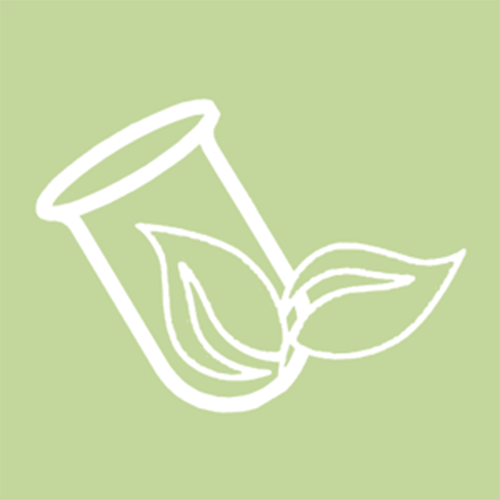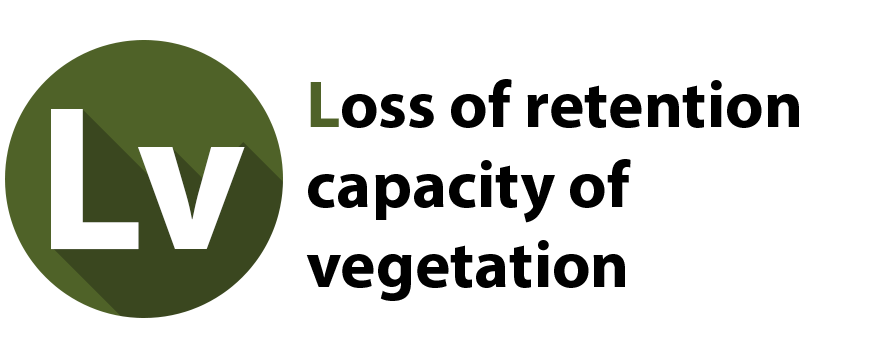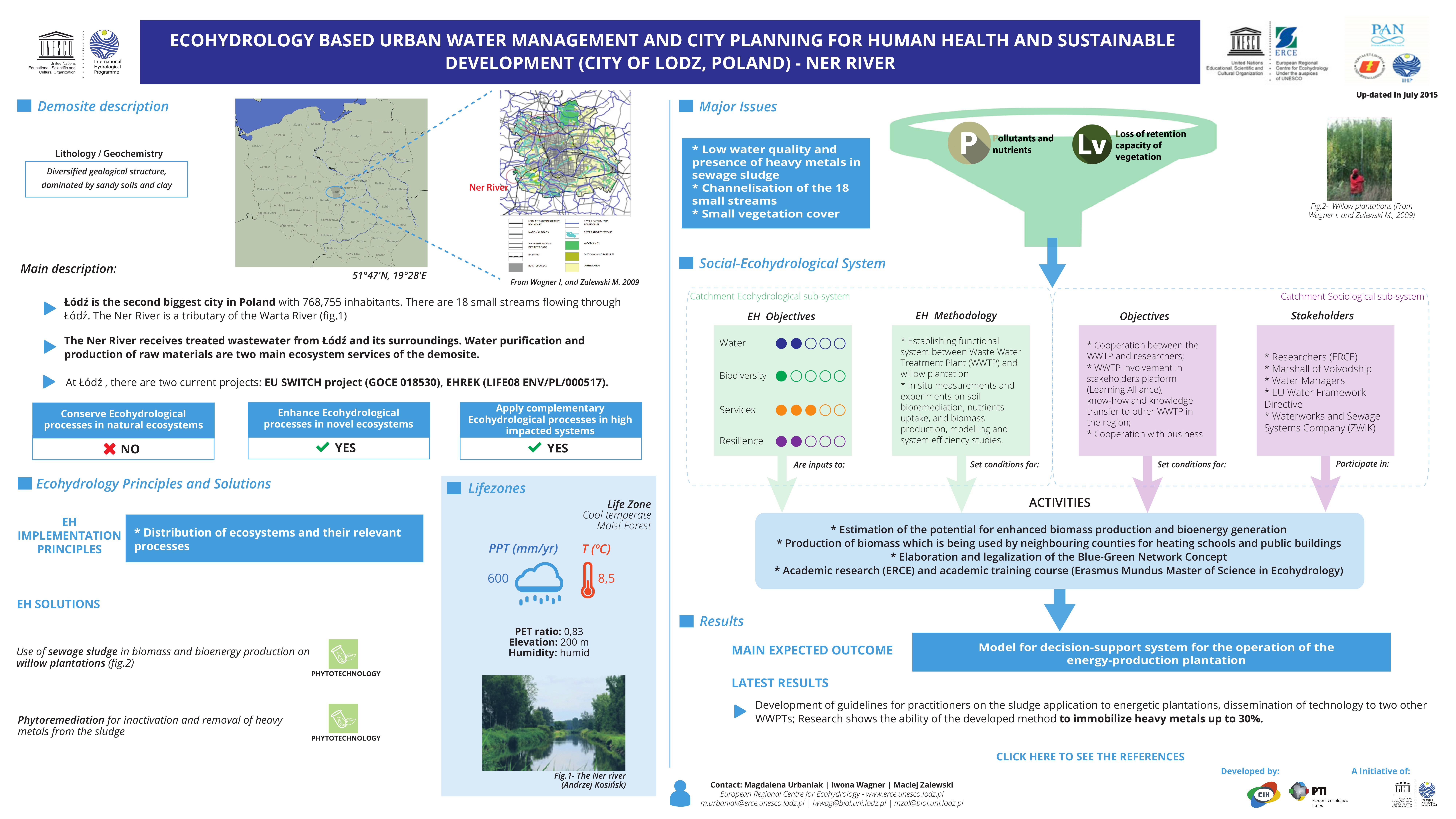ECOHYDROLOGY BASED URBAN WATER MANAGEMENT AND CITY PLANNING FOR HUMAN HEALTH AND SUSTAINABLE DEVELOPMENT (CITY OF LODZ, POLAND) - NER RIVER


Description
Location


Sketch

Information about lithology/geochemistry:
Diversified geological structure,dominated by sandy soils and clay
Main Description
- Łódź is the second biggest city in Poland with 768,755 inhabitants. There are 18 small streams flowing through Łódź. The Ner River is a tributary of the Warta River (fig.1); The Ner River receives treated wastewater from Łódź and its surroundings. Water purification and production of raw materials are two main ecosystem services of the demosite.;
- At Łódź , there are two current projects: EU SWITCH project (GOCE 018530), EHREK (LIFE08 ENV/PL/000517).
Enhance ecohydrological processes in novel ecosystem
YES
Apply complementary Ecohydrological processes in high impacted system
YES
This table presents the different categories of ecosystem services that ecosystem can provide, divided in:
Provisioning Services are ecosystem services that describe the material or energy outputs from ecosystems. They include food, water and other resources.

Raw materials: Ecosystems provide a great diversity of materials for construction and fuel including wood, biofuels and plant oils that are directly derived from wild and cultivated plant species.
Regulating Services are the services that ecosystems provide by acting as regulators eg. regulating the quality of air and soil or by providing flood and disease control.

Waste-water treatment: Ecosystems such as wetlands filter both human and animal waste and act as a natural buffer to the surrounding environment. Through the biological activity of microorganisms in the soil, most waste is broken down. Thereby pathogens (disease causing microbes) are eliminated, and the level of nutrients and pollution is reduced.

Erosion prevention and maintenance of soil fertility: Soil erosion is a key factor in the process of land degradation and desertification. Vegetation cover provides a vital regulating service by preventing soil erosion. Soil fertility is essential for plant growth and agriculture and well functioning ecosystems supply the soil with nutrients required to support plant growth.
Ecosystem services "that are necessary for the production of all other ecosystem services". These include services such as nutrient recycling, primary production and soil formation.

Habitats for species: Habitats provide everything that an individual plant or animal needs to survive: food; water; and shelter. Each ecosystem provides different habitats that can be essential for a species’ lifecycle. Migratory species including birds, fish, mammals and insects all depend upon different ecosystems during their movements.
Cultural Services corresponds nonmaterial benefits people obtain from ecosystems through spiritual enrichment, cognitive development, reflection, recreation, and aesthetic experiences.
Lifezones

![]()
PPT(mm/yr): 600.0
![]()
T(ºc): 8.5
| Elevation of demosite: | 200.0 meters above sea level |
| Humidity: | Humid |
| PETr (by year): | 0.83 |
EH Principles
Distribution of ecosystems and their relevant processes (ex: metabolism=water and nutrient uptake and retention; biomass production)
ECOHYDROLOGY ENGINEERING SOLUTIONS
Use of sewage sludge in biomass and bioenergy production on willow plantations (fig.2)
 Phytotechnology
Phytotechnology
Phytoremediation for inactivation and removal of heavy metals from the sludge
 Phytotechnology
Phytotechnology
Major Issues
- Low water quality and presence of heavy metals in sewage sludge
- Channelisation of the 18 small streams
- Small vegetation cover




Expected Outcomes
Model for decision-support system for the operation of the energy-production plantation
Latest Results
- Development of guidelines for practitioners on the sludge application to energetic plantations, dissemination of technology to two other WWPTs
- Research shows the ability of the developed method to immobilize heavy metals up to 30%.
Contacts
Iwona Wagner
- iwwag@biol.uni.lodz.pl
- www.erce.unesco.lodz.pl
- European Regional Centre for Ecohydrology
- www.erce.unesco.lodz.pl
Magdalena Urbaniak
- m.urbaniak@erce.unesco.lodz.pl
- www.erce.unesco.lodz.pl
- European Regional Centre for Ecohydrology
- www.erce.unesco.lodz.pl
Maciej Zalewski
- mzal@biol.uni.lodz.pl
- www.erce.unesco.lodz.pl
- European Regional Centre for Ecohydrology
- www.erce.unesco.lodz.pl

Social ecohydrological system
EH Objectives
EH Methodology
Catchment Ecohydrological sub-system
Objectives
Stakeholders
Catchment Sociological sub-system
Activities